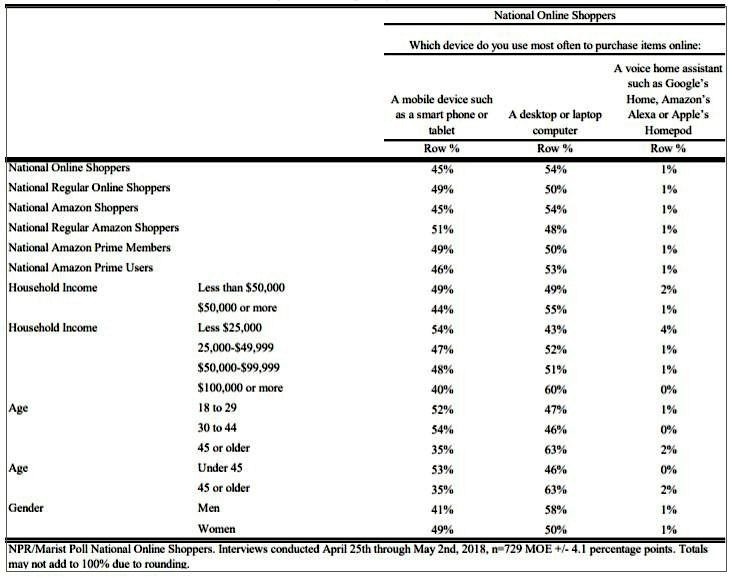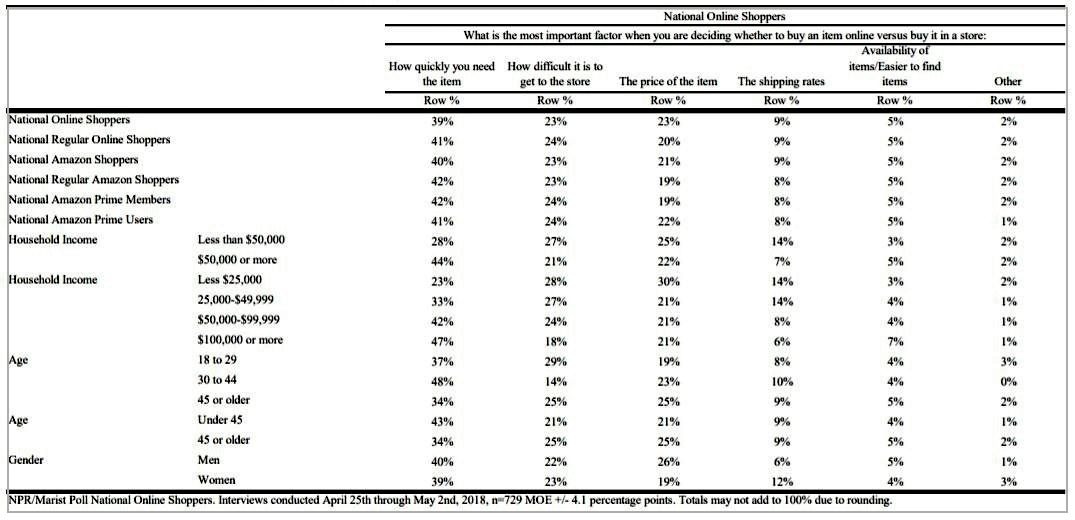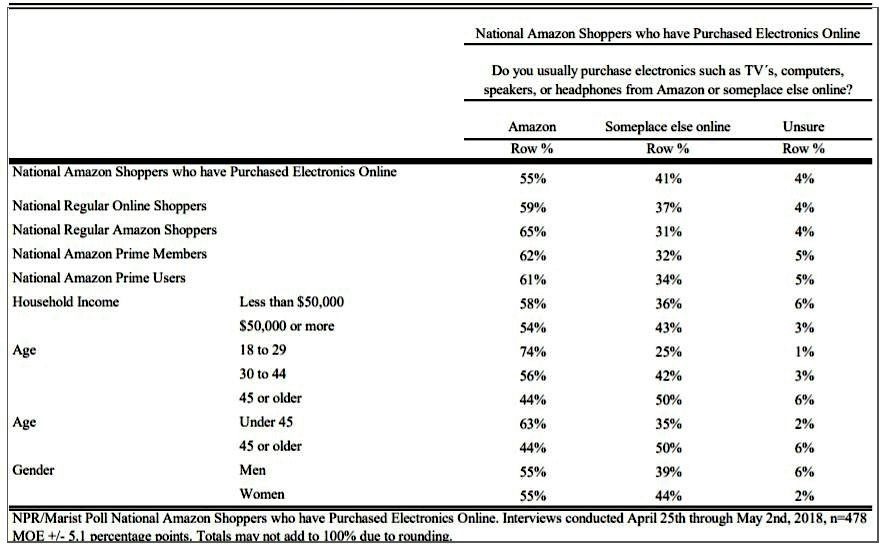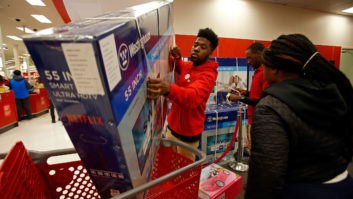The Census Bureau tells us that U.S. e-commerce sales rose 16.4 percent in the first quarter, to $124 billion year over year.
That’s compared with a relatively paltry 4.5 percent increase for total U.S. retail sales (which nonetheless came in at $1.3 trillion for the period).
Point being, E-commerce comprised 9.5 percent of all U.S. retail sales in Q1, the feds said, and the digital channel’s share of the marketplace continues to climb on a steady uphill trajectory.
So who the heck is buying all that stuff online? And who are the shoppers responsible for handing Amazon an estimated 44 percent(!) of those digital sales, according to a widely cited estimate by One Click Retail? Inquiring minds — and the folks behind a new NPR/Marist poll — want to know.
To that end, The Marist Poll, in collaboration with National Public Radio, queried 1,057 adults from April 25 through May 2. What they found was rather startling.
Among those Americans classified as “regular” online shoppers — consumers who make an online purchase at least once a month — 49 percent begin their online search at Amazon, and 95 percent have made at least one purchase there.
Further stacking the deck in Jeff Bezos’ favor: fully 56 percent of regular online shoppers are Prime members.
Related: Amazon Prime Exceeds 100 Million Subs
And while consumer electronics may not be the king of e-commerce (that crown goes to clothing and shoes), its popularity is certainly princely, with CE cited by 78 percent of regular online shoppers as their most common purchase.
Among this demographic’s other surprising traits:
- 73 percent have annual household incomes of $50,000 or more;
- 65 percent are white;
- 57 percent are under 45; and
- 53 percent have a college degree.
Men slightly outnumber women 53 percent to 47 percent within this group, although everyone appears fairly evenly divided over shopping by computer (50 percent) or handheld mobile device. (Only 1 percent said they most often shop by voice via a virtual digital assistant.)

Consumers said they like shopping online because cyber stores are open 24/7 (72 percent); it saves time (71 percent); and e-tailers have a larger selection (63 percent).

Interestingly, only 50 percent cited cheaper prices.
By comparison, regular Amazon customers — those who buy something on Amazon at least once a month — are somewhat younger, wealthier and better educated than their regular e-commerce counterparts, and are slightly more inclined to place their orders by smartphone or tablet (51 percent), with another 1 percent using shop by voice as their default method.
Consumer tech remains the second most popular category among this group, still behind clothes and shoes, although Amazon shoppers are more likely than others to buy CE online (83 percent).

And despite Amazon’s crackdown on excessive returns, 72 percent of its regular customers said they rarely return purchases, and 18 percent said they never do — although 81 percent said it’s good to know that there’s a free return policy in place.
Amazon shoppers are also fully aware of the company’s logistical prowess, with 40 percent citing the speed in which a product is needed as the most important factor in deciding whether or not to buy something online.
Not surprisingly, more Prime members (69 percent), who now pay $119 annually for the service, turn to Amazon first for their online shopping needs than any other online consumer, although 45 percent still prefer to shop in brick-and-mortar stores.
Speaking of which, why consumers don’t shop online is perhaps as curious, and critical, as the reasons they do. About a third of all Americans (31 percent) don’t shop online at all, mostly because they prefer the physical store experience (30 percent). Another 22 percent are concerned about privacy; 15 percent don’t have Internet access; 10 percent say they’re not tech savvy; and 5 percent are either uninterested or don’t like to shop.
Those who don’t shop online are more likely to lack a college degree (76 percent); are 45 or older (68 percent); earn less than $50,000 annually (66 percent); are female (55 percent vs. 45 percent); and live in the South (44 percent).
The poll is statistically significant within +/- 3.4 percentage points, Marist said.








